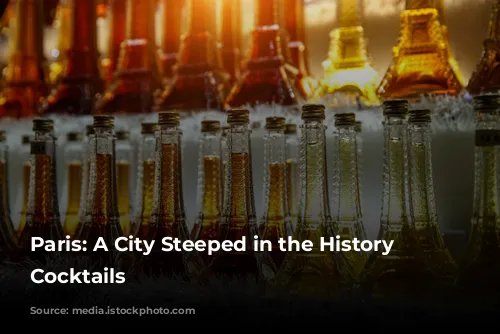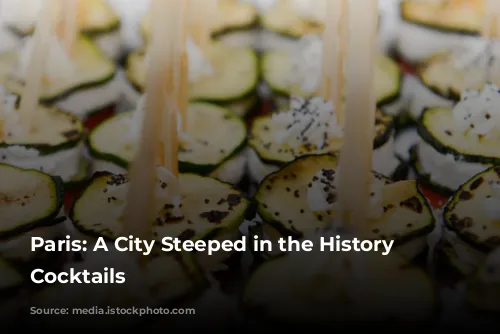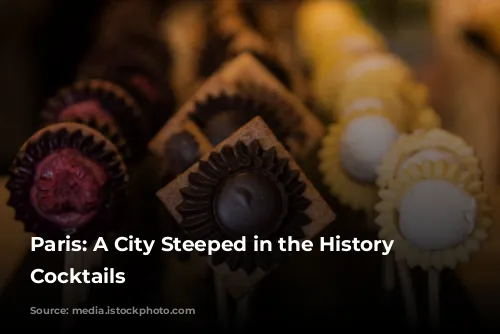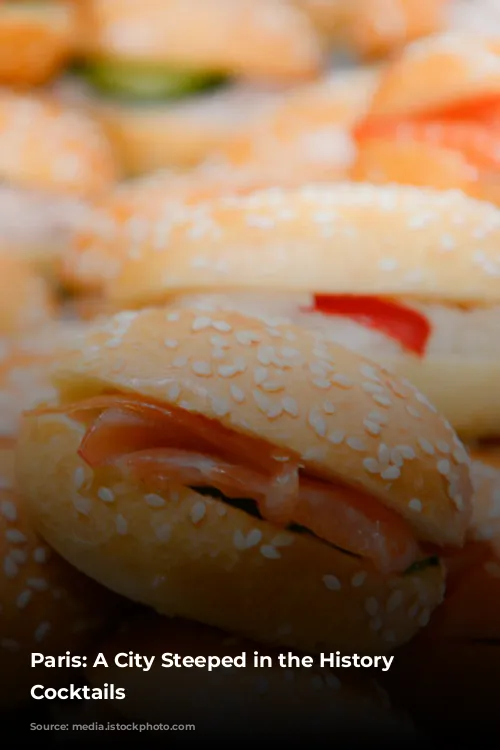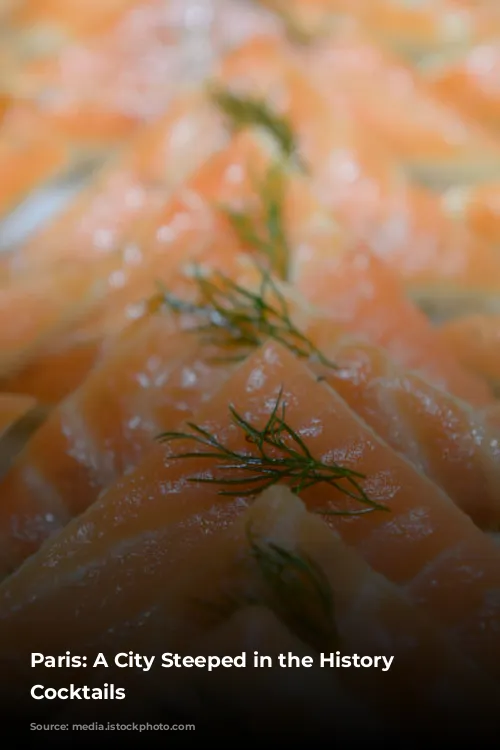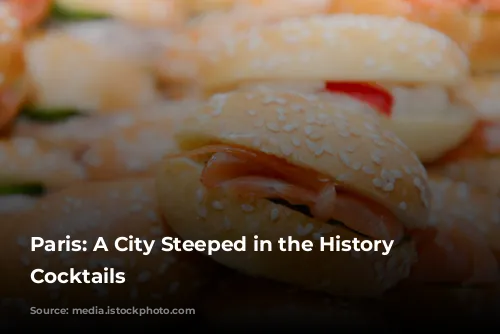Few things are more delightful than savoring a delicious French cocktail while in the City of Light. Paris has always been a city for drinkers, a fact reflected in its long and fascinating history of alcoholic beverages. Let’s take a journey through time to explore the evolution of cocktails in the City of Love.
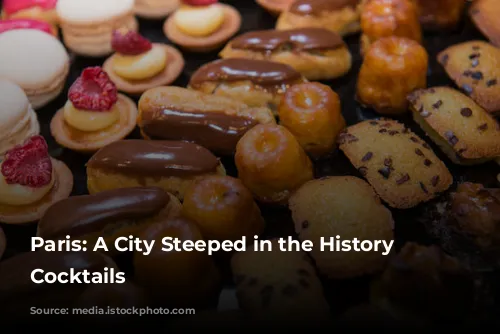
From Taverns to Cafés: The Dawn of Drinking in Paris
Imagine the bustling taverns of ancient Lutetia, the precursor to modern-day Paris, where Romans gathered to indulge in alcoholic beverages. Fast forward to the 17th century, and every street in Paris boasted at least one drinking establishment. The 1660s witnessed the emergence of the first cafés, including the renowned Le Procope. These havens attracted influential figures of the Enlightenment, such as Voltaire and Rousseau, who were drawn to the novelty of coffee and lemonade.

A City of Contrasts: La Belle Paris and the Birth of a Drinking Destination
The late 19th century marked a pivotal moment in Paris’s history, as it embraced its role as a global drinking destination. Having been the first city to boast electric street lighting, Paris was a city of contrasts, experiencing a period of prosperity following a tumultuous era. The breathless pace of progress and the seductive allure of vice made Paris the ideal place to indulge in alcoholic beverages.
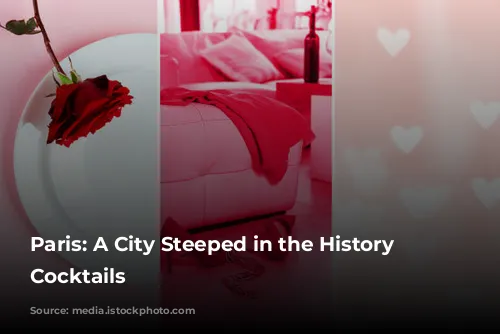
The Belle Époque: A Playground for Poets and Bohemians
By 1885, Paris had more than 30,000 drinking establishments, offering a heady mix of alcohol, entertainment, and intellectual discourse. While cocktails were already gaining popularity in America, Parisians preferred wine, beer, and champagne. Absinthe, a potent spirit, was also widely consumed. This was the era of the Belle Époque, when Montmartre pulsated with nightlife, attracting poets, artists, and bohemians who flocked to cabaret bars like Le Chat Noir and Le Moulin Rouge. Café Les Deux Magots, opened in 1885, became a magnet for literary luminaries, including Verlaine, Rimbaud, Mallarmé, and Oscar Wilde.
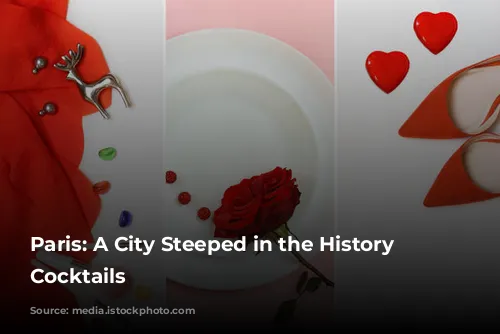
The Rise of the Cocktail: From American Troops to the Hôtel Ritz
The mood shifted with World War I, and cocktails finally made their way to France. American troops stationed there, along with luxury cruise liners connecting America and Europe, brought with them a taste for cocktails. Initially, these drinks were confined to American bars, with the bar at the Hôtel Ritz Paris being a pioneer of hotel bars. Meanwhile, renowned cafés such as La Closerie de Lilas, Le Dôme, and La Rotonde on the boulevard du Montparnasse became hubs for artistic and cultural life, attracting young composers like Francis Poulenc, Claude Debussy, Maurice Ravel, and Igor Stravinsky. This area had eclipsed Montmartre as the center of Parisian intellectual life.
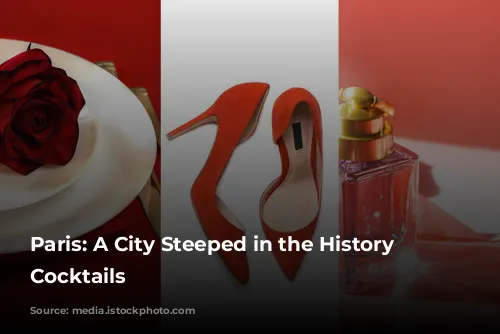
Prohibition and the Lost Generation: Paris as the Cocktail Capital
The implementation of Prohibition in 1919 proved to be a catalyst for the cocktail’s popularity in Europe. American artists and writers seeking refuge from Prohibition flocked to Paris, bringing with them a passion for cocktails. This was the era of the Lost Generation, which included literary giants like Ernest Hemingway, Scott and Zelda Fitzgerald, George Gershwin, Cole Porter, Gertrude Stein, and Man Ray. Paris became the epicenter of the artistic and cocktail universe. Hemingway himself, known for his love of drinking, even inspired several cocktails bearing his name, including Death in the Afternoon and the Hemingway.
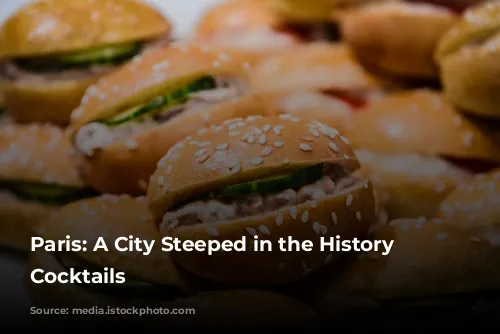
The Glamour of les Années Folles: A Cocktail-Fueled Era
The exuberance of les années folles, or the Roaring Twenties, was fueled by cocktails and a sense of joie de vivre. A vibrant mix of literary and cultural figures embraced the glamour of a beau monde where wine, champagne, spirits, and classic cocktails flowed freely. Harry’s New York Bar, owned by Harry MacElhone, became a haven for cocktail enthusiasts, while Le Boeuf sur le Toit, a jazz club frequented by Jean Cocteau, added to the buzz of Parisian nightlife. This golden age saw the birth of several classic cocktails we still enjoy today.
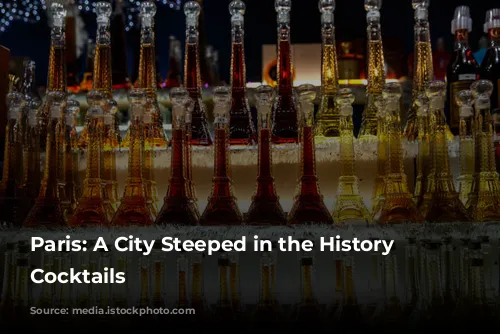
From Saint-Germain-des-Prés to the Marais: Paris’s Enduring Love for Cocktails
The repeal of Prohibition in 1932 did little to dampen the vibrant cocktail scene in Paris. Coco Chanel, Yves Klein, and Charlie Chaplin were among the many notable figures who continued to enjoy cocktails in the city’s iconic bars and cafés. The 1940s saw the rise of Saint-Germain-des-Prés as a cultural hub, with Brasserie Lipp, Café de Flore, and Les Deux Magots becoming meeting places for writers and artists. The area also became known for its underground jazz clubs, such as Le Tabou, which played revolutionary music. This era saw the birth of existentialism, with Jean-Paul Sartre and Simone de Beauvoir famously philosophizing over apricot cocktails.

A City That Never Sleeps: Parisian Cocktails for All Time
While the iconic drinkers of yesteryear may be gone, the allure of Parisian bars and cafés remains strong. In recent decades, cocktails have experienced a resurgence in popularity, leading to the emergence of a vibrant scene of modern bars and speakeasies in the Marais district. Here, innovative mixologists create delicious and imaginative concoctions, showcasing the city’s enduring love for cocktails. Paris, a city of romance, bright lights, and chic hideaways, offers the perfect backdrop for enjoying a drink. So, next time you’re in Paris, be sure to indulge in a cocktail, and let yourself be transported back in time by the city’s rich and intoxicating history.
